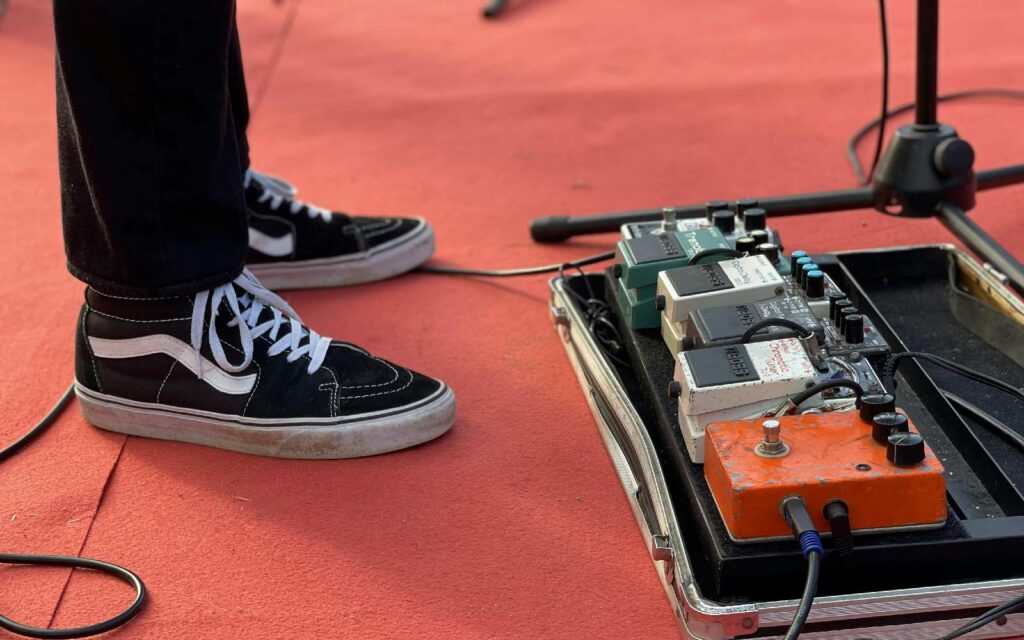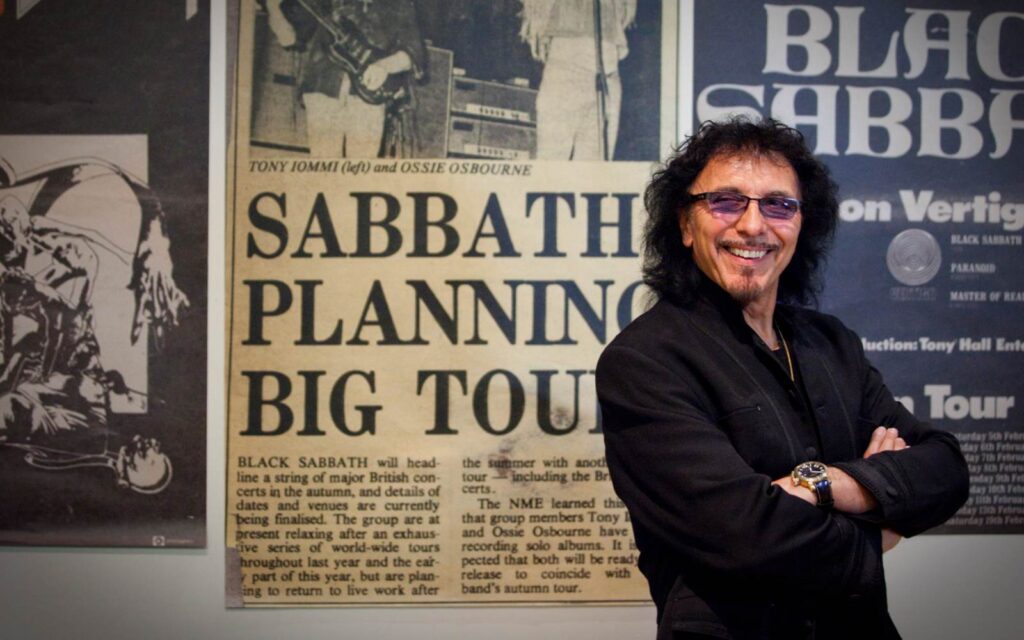For all of the wall-of-sound addicts out there, these are Mixdown's top tips for achieving shoegaze guitar tones.
Since creeping into the mainstream at the tail-end of the ’80s through UK groups like The Jesus and Mary Chain, Cocteau Twins and My Bloody Valentine, listeners around the world have been enamoured by the sounds of shoegaze. Influenced by the wave of goth and post-punk groups that emerged earlier in the decade, these early acts performed music that was characterised by earsplitting volume and the copious amount of effects pedals that laid at the feet of each player – hence, the term shoegazing was born.
Read all the latest features, columns and more here.
By smashing everything into as many stomp boxes as possible, guitarists were able to create dense soundscapes that were constantly teetering between chaos and control, offering an alternative approach to the guitar that shied away from flashy playing in favour of invoking moods and ambient washes.
Today, we’re diving into the fundamentals of shoegaze to discuss some of the key names in the genre to see how they approached the guitar, as well as some of our own tips and tricks to create your own atmospheric textures. First, let’s get acquainted with some of the albums detailed below, then we’ll dive in.
Build up your pedalboard
Come on, does this one need any explaining? The term ‘shoegaze’ itself literally comes from the shoegaze guitarist warily eyeing their pedals, preparing to envelope their audience in a wash of sound at any given moment. To put it in layman’s terms, shoegaze is a bit like a bike: without pedals, they both suck.
While there’s a few effects that have become more synonymous with individual bands of the genre, the barebones of a shoegaze pedalboard should include a reverb, delay, modulation and fuzz/overdrive – preferably both, and lots of it.
For reverb, you’ll want to seek out a digital pedal: your amp’s spring reverb tank definitely won’t cut it here. Digital reverb lets you achieve tones far beyond what’s considered natural, particularly if there’s controls for cutting the tone, adjusting modulation or introducing predecay. If you’re aiming to nail that Kevin Shields wall of sound, it’s worth seeking out a reverb pedal with a reverse function, which will assist with all those cavernous swells.
In the delay department, either analogue or digital effects will do the job fine. Slowdive have always been big proponents for the power of the Boss DD-3, yet you can also hear tape echo and analogue delay all over 2017’s Slowdive and 1993’s classic Souvlaki. If you’ve got the space on your board, experiment with both, and see how they play together with everything else in your signal chain. The same goes with modulation here too – personally, a BBD analogue chorus would be my go-to for a shoegaze board, but tremolo is also a brilliant option for wild warbles, and a bit of subtle phaser couldn’t go astray either.
For fuzz and overdrive, experiment with stacking each effect to create surging waves of gain to accentuate what you’re playing. A blast of fuzz can be a killer way to make a chorus really smash, while a bit of overdrive in the right spots can really darken up some of the more ambient, delayed sounds you’ll be chasing. There’s a zillion big name brands and boutique pedals out there to choose from, but you really can’t go wrong with anything modelled on a Boss SD-1, ProCo Rat 2, or a Big Muff.
Switch up your signal chain and use the effects loops
You know those rules that websites like ours push as being the right way to order your pedals? Ignore them. Some of the best guitar tones in recorded music have been created through guitarists messing with their signal chains, and mistakes often make for some of the best moments in music.
An easy way to experiment with your signal chain – and a go-to trick for many shoegazers – is by toying with the ordering of your fuzz and reverb effects. Putting your fuzz pedal after your reverb in your signal chain creates thick, woolly tones, and can interact with your reverb tails in unique ways. With a bit of knob-tweaking, you can even get your fuzz pedal to function in a manner similar to that of a compressor, squeezing your reverb to make the tails linger and then ramp the controls to spiral everything into chaos. If you’re running both a drive and a fuzz pedal, maybe experiment with drive -> reverb -> fuzz or vice versa, and see how each combination creates different tones.
Another hot tip to explore the more ambient, ethereal ways to approach shoegaze tones is by stacking delay effects and letting the nuances of your pedals lead your approach. For instance, running an analogue and digital delay simultaneously will create a contrast between the dark repeats of an analogue device against the crystalline bounce of a digital delay. Play around with placement and meddle with the delay time and repeats for warped self-oscillating feedback, or dime in the modulation for wonky, woozy chords that surge through your amplifier.
It’s also worth playing around with your amp’s effect loop (if it’s got one) to see if that makes a difference – the results might be surprising. On that note, when selecting an amplifier to suit shoegaze playing, try not to overthink things. Many guitarists opt for super loud, clean amplifiers like a Roland JC-120 or a Fender Twin Reverb, while others will go for something like a Marshall stack or a Vox AC30 providing there’s enough headroom for the occasion. The main discernible factor here is how nicely the amplifier plays with pedals, so be sure to trawl the net and test things out before you pull the trigger on anything.
Shoegaze guitar is different to ‘regular’ guitar
I know it sounds awfully condescending, but the whole point of shoegazing is to play your pedals. Try to think of your guitar as a tool with which to alter their sounds, and try not to assume the mindset of a lead guitarist. Your role is more or less to create atmospheres and conjure interesting textures to envelope your audience, not blow them away with flashy shredding and two-handed tapping. Kevin Shields’ playing in My Bloody Valentine definitely isn’t technically proficient, but his mindset towards shaping his sounds is paramount, and that’s what laid the blueprint for shoegaze in the first place.
One of the most common techniques heard on shoegaze records is the constant manipulation of the tremolo arm, which Kevin Shields often referred to as ‘glide guitar.’ This is effectively achieved by constantly wavering your tremolo arm while strumming your guitar to create a consistent warble, almost like a broken tape machine of sorts. This technique works best with Fender-style tremolo systems, particularly Jazzmasters and Jaguars, although I’ve found that Stratocasters and Mustangs also have a lot to offer here too, and I can’t imagine that a Bigsby would be totally useless in a situation like this either – just make sure you’re checking your tuning every so often!
Another really easy way to create unique sounds is by messing about with your guitar’s volume and tone controls. I think a lot of players tend to avoid relying on their guitar’s controls in an effort to preserve their pure tone, but when you’re stacking a bunch of effects upon one another, your tone knobs can become vital tools. Rolling off the tone on your neck or middle position and adding a lashing of fuzz and reverb can be super effective for creating dark and incredibly dense tones, while rolling back the other way with your bridge pickup can create a searing fade-in to make your leads really stand out.
Also, it’s 100% worth experimenting with your volume knobs to create swells here, especially when you’re stacking reverb and delay together. Try adding in a splash of modulation and maybe a pitch shifter for ethereal swells that sound like a church organ stuffed inside of a shoebox, or even use a wah-wah in conjunction with your volume and tone controls to filter through frequencies and muck everything up.
Even if you’re not planning on joining a shoegaze band any time soon, there’s still a lot to be learnt from the way the guitar is used in the genre. If the trajectory of popular music in the 2010s has confirmed anything, it’s that the role of the lead guitar as we know it is rapidly evolving. Audiences nowadays are much more interested in hearing a soundscape that invokes an emotional response than they are watching a lead guitarist flail up and down the fretboard. By embracing the more atmospheric elements of shoegaze guitar, your approach towards playing guitar will alter drastically, and almost certainly for the better.
Looking for the ultimate shoegaze sound? Use Kevin Shields’ own pedal!







